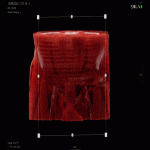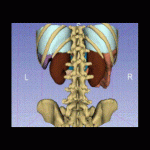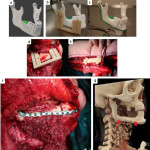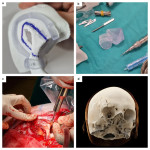Learning objectives
To showcase various advanced visualization techniques, highlighting their significant visual impact and role in pre-operative planning and surgical outcomes
Background
Advances in computer and diagnostic imaging technologies enable the surgical treatment of more complex cases, reducing surgery times and improving patient outcomes. However, these advances also leave surgeons sometimes dependent on advanced visualization techniques.Until recently, radiologists had a limited toolkit, primarily consisting of maximum intensity projections (MIP), multiplanar reconstructions (MPR), and volume rendering techniques (VRT). Today, the field boasts sophisticated anatomy representation methods used in various clinical and educational scenarios. These include the cinematic rendering technique (CRT), extended reality (XR) encompassing both virtual (VR) and...
Findings and procedure details
A) CINEMATIC RENDERING TECHNIQUE (CRT)Cinematic rendering technique (CRT) transforms standard CT and MRI data into photorealistic 3D images, by precisely simulating light propagation and interaction. Unlike volume rendering technique (VRT), cinematic rendering technique (CRT) enhances depth perception in 3D reconstructions, crucial for through-plane views.It utilizes high dynamic range rendering maps for natural lighting, resulting in a visually appealing and lifelike image, prioritizing depth and shape perception over spatial resolution [1].CRT could be valuable for presurgical and preinterventional planning where more advanced visualization techniques are not...
Conclusion
The integration of 3D printing and extended reality technologies in the field of medicine is expanding, with applications ranging from pre-surgery planning and simulations to guiding procedures in real-time, educating medical trainees, and providing valuable resources for patients. Notably, 3D printing advancements enable the production of customized surgical guides, implants, and prosthetics tailored to the unique characteristics of each patient. The ongoing progress in image processing and computational speed is moving us closer to the realization of seamless, transparent, and gesture-controlled intraoperative overlays, promising to...
Personal information and conflict of interest
A. Ivančić:
Nothing to disclose
V. Kopačin:
Nothing to disclose
References
Eid M, De Cecco CN, Nance JW, Caruso D, Albrecht MH, Spandorfer AJ, et al. Cinematic Rendering in CT: A Novel, Lifelike 3D Visualization Technique. American Journal of Roentgenology [Internet]. 2017 Aug;209(2):370–9. Available from: https://www.ajronline.org/doi/pdfplus/10.2214/AJR.17.17850
Rybicki FJ, Grant GT, editors. 3D Printing in Medicine. Cham: Springer International Publishing; 2017.
Shabnam Fidvi, Holder J, Li H, Parnes G, Shamir S, Wake N. Advanced 3D Visualization and 3D Printing in Radiology. Advances in Experimental Medicine and Biology. 2023 Jan 1;103–38.
Mitsouras D, Liacouras P, Imanzadeh A, Giannopoulos...





